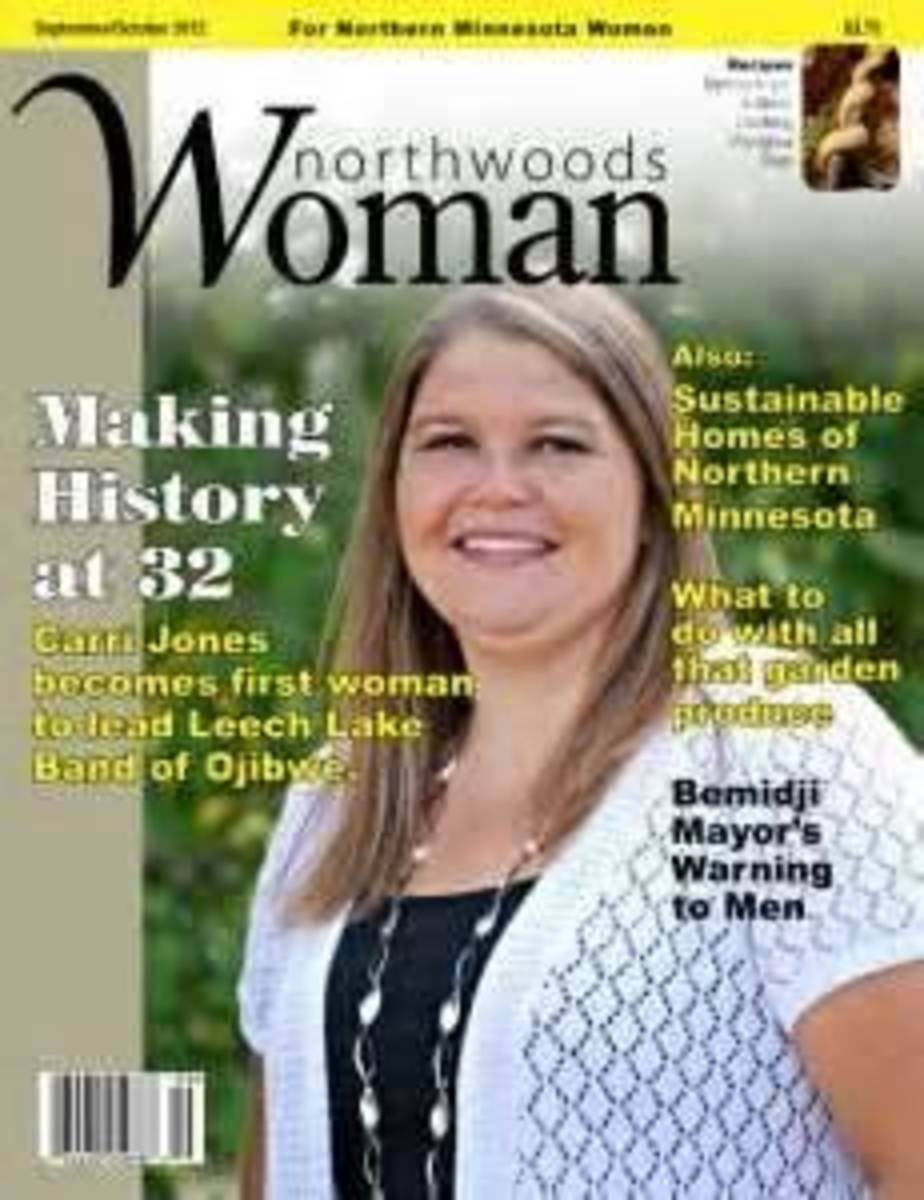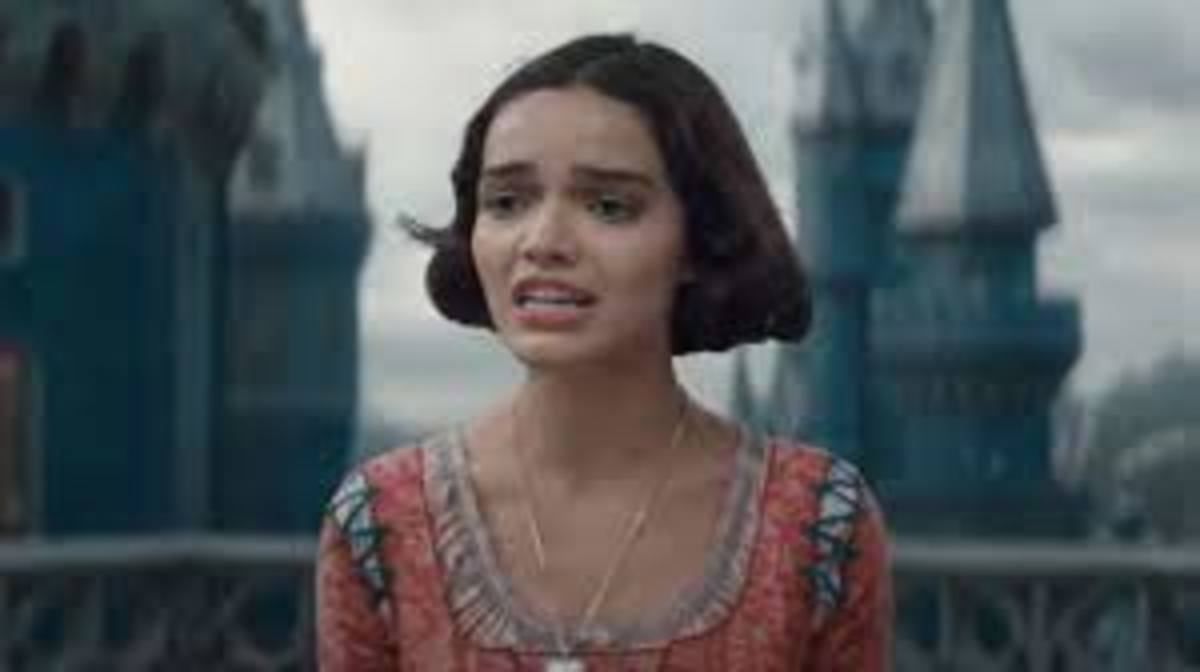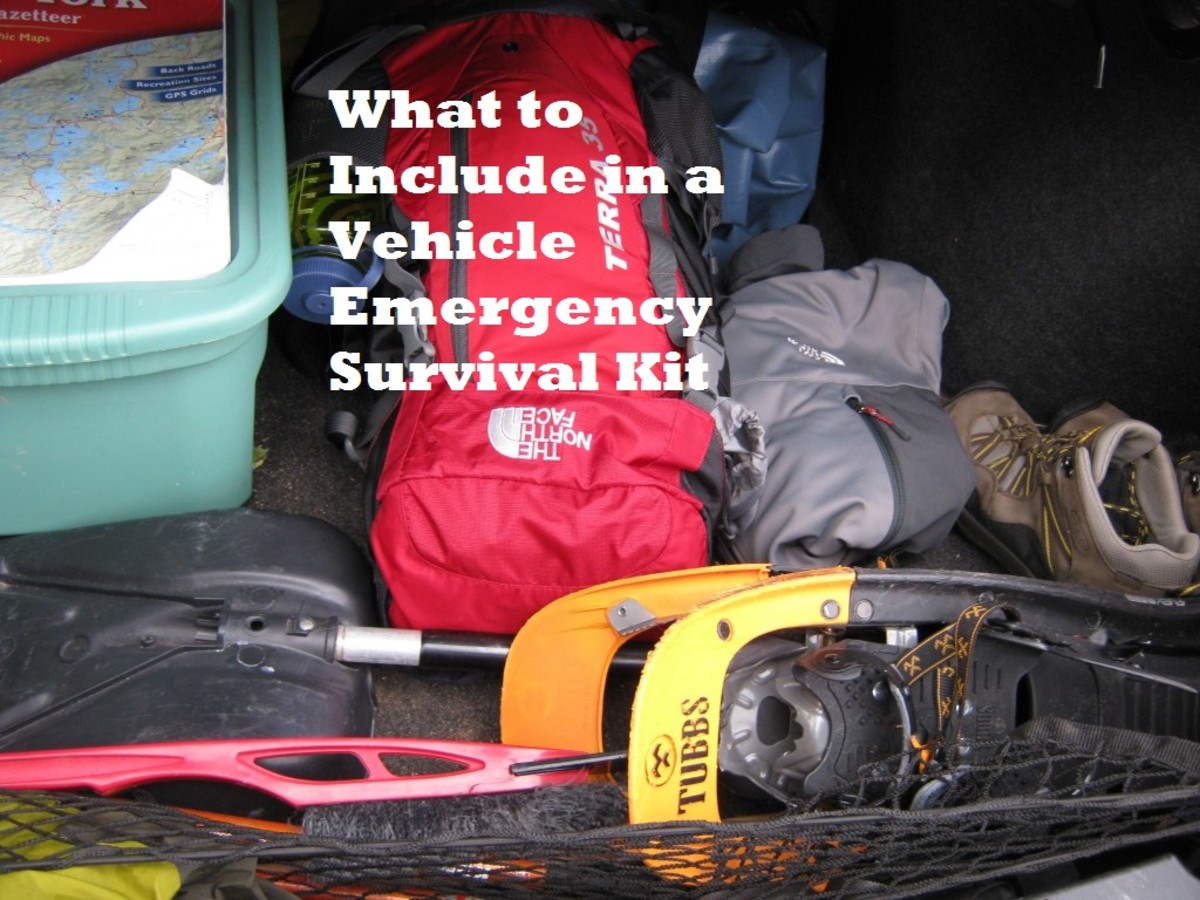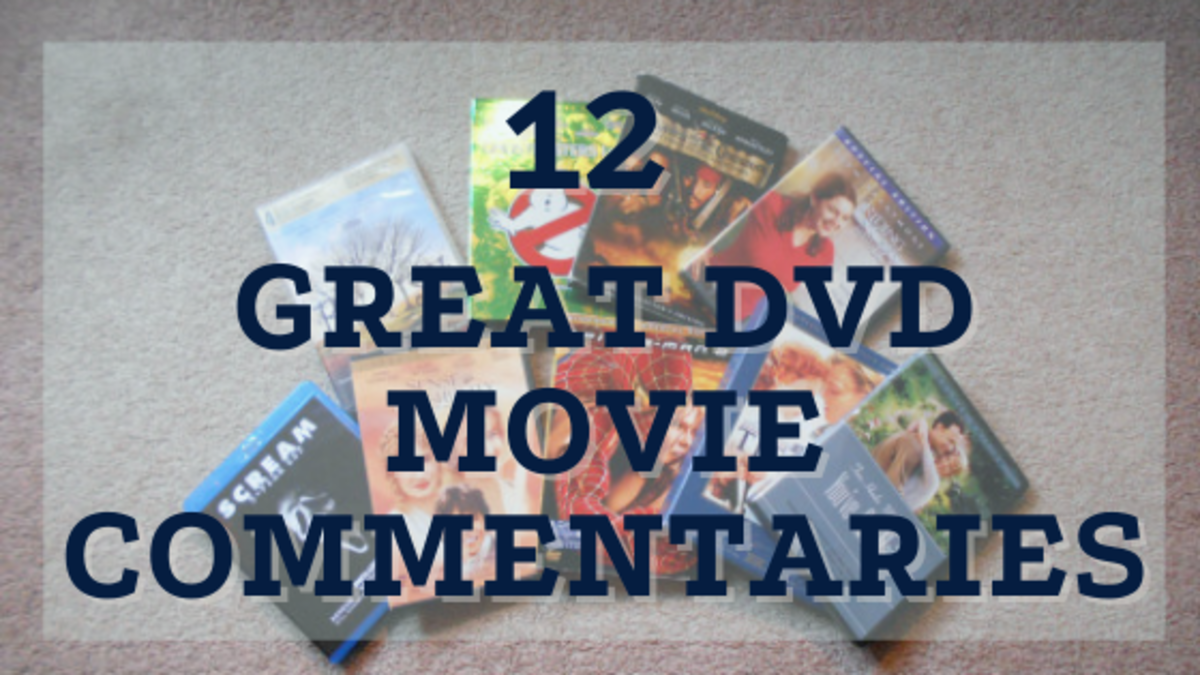Wind River Film
As I compose this Hub
This is a very painful topic to write about, as some of the people I’ve met and lived alongside of during my lifetime (so far), are pretty close representations to the people, culture and situations that were shown in the Feature. I’m glad that the producers and director/screenwriter were able to secure financing, actors, and production crews to make this film. It’s a truthful representation of what’s allowed to happen in a small town, based on the roles that each person fulfills.
Don’t let popular media sway your personal decision to see this film. A lot of people who were present during my viewing of the film were interested in the topic. Some of the conversations included:
- Steven, who recently found out that he’s part Native American, and wants to learn more about his cultural background, per his mom’s current genealogical research. He really enjoys the employee benefit of seeing good free movies; we met and found out that we really liked Logan. Steven is multi-ethnic, and identifies as “mainly Hawaiian.” Some people think he’s Puerto Rican, but he said his main ethnicities (that he knows about, until Mom discovers some other new lineage) are Hawaiian, Scottish, Irish, German, Filipino, and possibly Portuguese.
- Rudy wants to see how the Native Americans are being portrayed in the film, as he’s heard “most of the reservations are pretty bad.” Being part Native Hawaiian, he’s wanting to see what the filmmakers have done to show another cultural group. This sprouted a side discussion between he and I about religious beliefs (which, if you’ve met me, I don’t judge people), and how the filmmakers of Risen showed a non-biased view of The Messiah’s life. Rudy is hoping to see the same type of presentation in Wind River.
- A PostFilm reaction from one of the Aunties in the audience was “I thought it was going to be a murder about the little boy, not about that!”
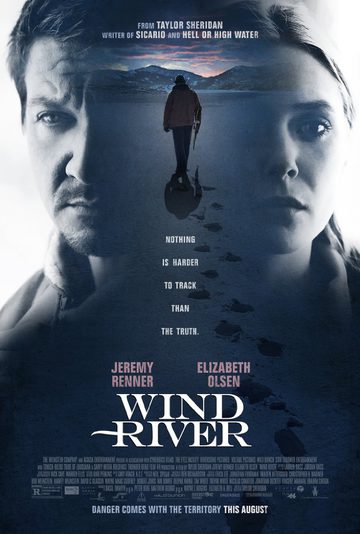
A pre-film warning (spoiler free)
A pre-warning, if you opt to see this film, due to the Mature content: Just like the AARP Free Screening Event for The Hitman’s Bodyguard, our facilitator warned us: “It’s rated R.” Please remember to visit my main Hubpage for that film review. Throughout this column, some of the film’s memorable dialogue will be included in (“”) format, as appropriate to the theme being discussed. Also, my conversations with other people are also cited in (Freeman, source, year) format.
Here’s the rundown for Wind River’s story elements:
- Revolves around the murder and rape of a young Native American woman, named Natalie.
- How FBI Agent Jane Banner (played by Elizabeth Olsen as a blond this time, not as a redhead) is called into investigate the murder and rape case, and what she experiences in Lander, Wyoming.
- How she must persuade a Fish and Wildlife Service Hunter, Cory Lambert (most excellently played by Jeremy Renner), who initially discovers the body, for his help in solving the murder case, as she has no experience with the weather elements, land and culture (“You know, I’m way out of my league here”).
- The Indian Tribal Police’s role (played by Graham Greene) in the murder case, as well as the local Doctor and Coroner’s roles.
- How Natalie’s family members were affected by her death (“What do you mean was?”).
- The community connections surrounding Natalie’s death, and “who can make it right.”
- Natalie’s story, shown right before the film’s Climax and subsequent Ending.
- Themes of hard justice, survival of the elements in the wilderness, woven into small town dynamics are presented in the Feature. In the words of actor Chris Pine, “A neo Western.”
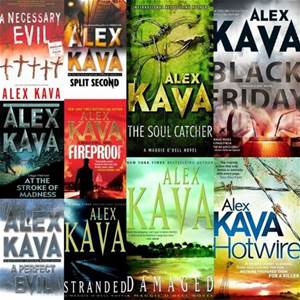
If you’re familiar with the Maggie O’Dell character
If you’ve read some of Alex Kava’s novels about Maggie O’Dell, then you will enjoy this Feature. Some of the cases that Maggie must solve reminds me of the characterization emoted by Elizabeth’s performance as FBI Agent Jane Banner. Not gruesome, but made of true grit.
Taylor Sheridan wrote and directed this film, and is best known for being the screenwriter of Hell or High Water. If you’ve had the opportunity to see HoHW, then you will also like this film. As Richard “RB” Grotto reported from his attendance at Austin Film Festival 2016, “everyone’s talking about Hell or High Water, Hell or High Water…” (Webinar, “Two Guys from New York”, 5-24-2017). Being an R rated film due to its mature content and violence, Wind River shows through the use of superb dialogue and visual imagery, the lives of Native American and Caucasian people, as well as who has the real spirit, regardless of skin color. If not given the creative license to “be based on actual events,” I’d say this film was done in a Documentary style, similar to Kathryn Bigelow’s Detroit (scroll down for more discussion) and 2016’s Risen.
- Putting aside politics or religion, this film shows what actually happens in a small community, which demographically is pretty much a 50-50 split between the two ethnic groups, in this area of the country. Having lived not only in Colorado (11 years) and Montana (7 years), I also share a personal connection with the film’s storyline, as I can identify people who fit each character’s role. Keep scrolling down to discover more of this part of the West.
- Thank you to Screenwriter-Director Taylor for bringing this one tale to life, as this is exactly what the culture is like inside the small town I lived in: 10,000 people inside the city, with about 35,000 people living in the county (“I only have 6 policemen for an area the size of a few of those smaller states”). Geographically, I was situated in the middle of 6 Native American reservations (there are 7 nations in Montana alone), and the main town was composed of many different personality types, as seen in the film. It’s not a question of skin color, but as Cory says to Jane “You have that spirit.”
- Mainstream audiences might not like to see the film, as judged by some of the PostFilm comments. Some audience members were shocked at the film’s ending, because hard justice is applied. With the story and plot done so well, this film ranks up there as one of my Top 3 movies of 2017, along with Logan. (I have yet to pick #3, because it’s only early September, and there are more films in the Pipeline)
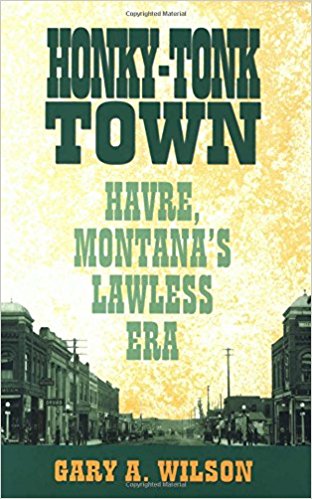
If you’d like to learn more about the Western Lifestyle
To learn about the history in a Honky Tonk Town (aka a bunch of other non-mentionable names), please visit my friend Gary’s website. He is a very accomplished writer, and actually having read a few of his books, before I met the author. In a small town, he came through my line at the local Albertson’s, so that’s how I initially met him. During an informal interview with him, when I asked him “When’s the next one coming out?” he told me “I spend more time researching my books than writing them. Sometimes. Actually, a lot of the time (laughter).” (Freeman, 2008).
Interestingly enough, a few years later, with the small town dynamics, I ended up working with his son at one of the local restaurants, where Mike had also served in Iraq. Statistically, Montana has the largest number of skilled marksmen in the nation, due to either Reserve duty or Retired U.S. Military Service personnel. Again, not surprising to me while watching the film, when Cory has a huge pistol, and an even larger rifle, and makes his own bullets in the film. Having seen Jeremy Renner in other films, and seeing his performance in this one, I am now a Film Fan of his. A lot of audience members also came to see this film, because Jeremy’s starring in it.
Some examples of “The Western Lifestyle” as depicted in FilmWorld
As there are numerous Westerns to choose from, most especially some of Clint Eastwood’s western films, I can’t mention all of them in this column.
Wind River is not only a Native story, but indicative of a Western lifestyle. Another film example which one can relate to, is City Slickers, when Jack Palance’s character snorts at Billy Crystal’s character (“City folk”), this is how local Western townfolk view people who come from the city, and don’t know how to adapt to the smaller town’s lifestyle.
As far as popular culture goes, this is not any more laughable than the latest T-Mobile ad, where the City Couple pitch a tent in the wilderness and complain that it’s too quiet, while starting their 10 hours of “Soothing City Noises” so they can fall asleep. It comes down to one’s perspective.
In the Feature, the main town, which was an exterior shot of the monument sign of Lander, Wyoming, but other than that one long shot in the film, the remainder was shot on location in Utah at the Wind River Indian Reservation, as well as Park City Studios, for interior shooting (pro.imdb.com). Just like in Hell or High Water, the magnificent landscape is captured on film, except this time, it’s not a West Texas summer, but a Wyoming winter (“At negative 6, it’s colder than a gold digger’s ass”). One gentleman laughed out loud at that dialogue line, during the film viewing, because it’s true. You know it’s cold outside, when people talk about the temperature being positive-or-negative, and if it’s negative, is it single or double digits?
True Fact: When it gets cold outside, the temperature drops below 32 degrees Farenheit (which is commonly referred to as “below freezing”), to 0 degrees Farenheit. Once it drops below 0 (“sub-Zero”), the gauge goes into negative temperatures. At negative 10 degrees, it’s commonly called “double digit negative.”
|
|---|
The actual Wind River Reservation
Traveling throughout the Western States
If you’ve traveled throughout most of the Western States, the shape of the Rockies looks different in each state, passing through each city and its unique landmarks. Truly, Route 66 is only one travel route, but there are many ways to reach a destination. If you’ve done a lot of driving like I have, then you know the USA’s Highway system eventually interconnects. But, when in doubt, check it out.
- Local Gas Station Attendants. For example, the annual large-print edition of Rand McNally Atlas is not the “be all end all” of directions, such as when I left Wyoming’s north end, before entering southeast Montana. I didn’t know where I was going, so after I gassed up at the local station in Buffalo, Wyoming, I asked for directions. Humbly, I might add, due to the skin color issue on Labor Day weekend 2007. Which the female attendant was more than happy to supply, as I had just topped off my H3. About a mile past this gas station, true enough, the female attendant’s directions were correct: I-25 has an abrupt T-road split, and if you were not in the correct lane to begin with, you would have no time to change lanes, therefore driving Eastbound in the right-hand lane, headed towards Sheridan, Wyoming, instead of heading northwest towards the southern border of Montana. The next turnaround on this Interstate would be about 30 minutes (40 some miles) down the road. Yes, the Western states are considerably larger than other states, which leads back to the incredible film dialogue.
- People who commute a lot would also be another source of reliable driving information. Even better, ask people who are Merchandisers inside your local Wal-Mart grocery store, as they travel within the state, or between states, depending on their territory. They often have the best directions, because they have to navigate traffic, during different times of the day, in order to get their jobs done. Also, in some of the smaller communities, especially during Winter, no one likes to see anyone stuck on the side of the road.
- People who enjoy recreational driving. It’s not unusual to meet other people who enjoy recreational driving, such as motorcyclists (“bikers”), RV campers-drivers or SUV drivers. If one enjoys the road, then, he or she would be a good source of information, especially if driving from a Rural setting into a more Urban one: “Where is the turnoff from I-70 located, when I’m at the Pepsi-Cola Center in St Louis, MO?” (Freeman, 2013)
Great job by the filmmakers, in not using GPS or any technology for finding directions. (“She’s stuck, she can’t see the driveway from there.” “Should I go out and get her?” “Yeah, it’s either you or me.”) In the West, you just know your way around, and don’t need Google Maps or your cellphone to tell you where to go. Okay, unless your company is reimbursing mileage, then Google Maps would probably be okay to use, as it gives point-to-point mileage count; but, it doesn’t figure in any weather closures (“Only in Wyoming, we have to drive 50 miles, to only go 5”).
True Fact: Hell or High Water was shot in Clovis and Tucumcari, NM, as the filmmakers never set foot in West Texas, as the film story indicated.
|
|---|
Similar to Colossal’s theme
If you hadn’t the time to research Wind River, this is a much grittier film than Colossal, which I saw theatrically on May 9th, 2017, based upon Uncle Lawrence’s recommendation (https://www.youtube.com/channel/UCDewWJYRzoLHH_0cW2zEotA). Colossal is a combination of film themes and imagery from the mid-1990s until recently. Anne Hathaway was one of the producers, while also starring in the film. Normally thought of as the nice “RomCom” guy, Jason Sudeikis can definitely play a dramatic Antagonist role.
I was in for a surprise, because story-wise what started out in a small town, where Anne Hathaway’s character returns from the Big City, and accidentally runs into her middle school friend, played by Jason Sudeikis, who inherited the bar from his father, and now runs it seven nights a week. He offers her a job, waiting tables, but what starts out as him checking in on “how she’s doing,” turns really creepy as weeks pass. Meanwhile, Anne’s character seems to attract guys (one of Jason’s friends, as well as her ex-boyfriend from the City), while Jason’s character gives her lots of gifts, ending up in their struggle.
Released on DVD a few weeks ago, Colossal is a social film, showing Seoul, Korea earthquakes, Sci-Fi Godzilla versus another opponent, urban legend, with an underlying Domestic Violence theme. Which, if you see this film, was shown in the undercurrents running throughout the film, through the use of dialogue and character action.
At the film’s conclusion, my Ticket Taker said “not a lot of people were seeing that film. I wonder why.” Even she didn’t know that it dealt with a statistically rising societal concern.
Another film that deals with the consensual side of the relationship is 50 Shades Darker, as portrayed between Anastasia Steele and Christian Grey. Please see my other Hubpage for film coverage, and thank you to the readers who chose to read the film review, before viewing it in theatres on Valentine’s Night 2017.
- Fifty Shades Darker Film
Just saw this film and it *is* thought provoking! Remember to stay for the Ending Credit Roll. Scroll down for more deets…
A Few More PostFilmD’s
As Detroit showed what happened in 1967’s Algiers Hotel incident (as in past U.S. history), Wind River takes a modern look at the Native American culture inside the Wind River Indian Reservation. For those Movie Viewers who don’t know what happens “on the res,” this film brings to the surface some of the issues surrounding what it’s like to live close to or on an Indian Reservation.
Great exterior longshot of Cody’s Chevy Silverado driving up “to the Res,” because that’s exactly what it looks like. Ditto for the mobile homes exteriors used throughout filming.
Another PostFilm Discussion ensued between myself and Gene, whom I later found out is the Major Donor Manager for Hawaii Public Radio. He and I both agreed that the issues affecting this ethnic group were shown “really well,” (Gene) and “all those social issues that have been swept under the carpet for a long time” (Pam). As it turns out, Gene had lived in Utah and Idaho for a while, while Pam lived in Colorado and Montana, and has traveled numerous times throughout this area: Arizona, Utah, New Mexico, Colorado, Wyoming, Montana and Idaho. For those readers who have not had the opportunity nor desire to travel this part of the country, what is shown in the film is definitely real terrain.
Just like Hell or High Water, which is an Keeper Shelf movie, this film is done in the same storytelling style.
Why this film is poignant and yet so powerful
In the sharing of people who enjoy good film, I cried during Cody’s scene, where he and Jane are getting to know one another, outside of the workday. No, this is not one of those films where the two characters are getting intimate, as Cody’s plate is already full of parental responsibilities (estranged from Wilma and trying to spend time with Casey). This is the reason that Cody needs for Jane to understand why he continues to live and work in Lander for Fish and Wildlife Service (“Like, it’s my job”).
- If I had to personally identify with one of the characters in the film, it would be Cory’s wife, Wilma (played by Julia Jones). My husband at the time would actually have been the equivalent of Cory’s character (“There ain’t nothing native about you, except the wife you was married to…”). Unlike Wilma, who was looking to get out of town, and look for a job in Jacksonville Wyoming (“…where all the billionaires took over from the millionaires who used to live there”), I actually liked living in a smaller community, where, just like Cheers, everyone knows your name.
- I was actually described as an “import” into this community, as most people have a reason for being inside a small town, unlike Natalie, who was looking to get out of Lander, and was planning on having a better life. My identification with Wilma and Cory, is she is the native girl married to a white guy, who provided a better life for her and her children, while living in a nice house located outside of the reservation. The Local Mall Manager in my town was also an import from California, and she is Caucasian, while her reason for coming to town was family.
Great job by the filmmakers to show the scene-before-the-scene, by use of inference (“So, you and that FBI agent are getting your own posse together, is what I hear…”).
- Which is a whole another discussion, as the film touches only the surface, surrounding Native American life on and off the reservation. Most of the women I knew during those 7 years in Montana, either married a White Guy (which most definitely equals living in town with a White Name, not a Native name). The other option is hooking up with a Native American guy, and depending on his socio-economic status, meant living in town if a house rental was available, but it probably meant “Free housing on the res.” Sometimes, it meant owning a home outside of town, where land is abundant and no one bothers you (“You can get land for pennies on a dollar”).
- If you’ve driven on any Reservation, it goes for miles, depending on the reservation’s land size. If you chose to drive there, or have a reason to go there, a good safety tip, is to know exactly where you’re going in good weather, because when bad weather hits, the roads are blocked. Unless you know someone who commutes regularly between town and the res, then you won’t know if the main highway is closed down. However, in certain communities, State Highway Patrol works with each reservation to plow out the first couple of miles into the res, but then, the backed up snow could be piled upwards of 10 to 20 feet high, depending on the nature of the storm (altitude, storm size, and storm direction). So, most people in cold country drive Big Trucks for a reason, so you don’t get stuck in the snow (aka “Having big wheels”).
This type of survival tracking was shown by Cory, throughout the film.
·Choosing to live in “cold country,” one gets used to observing the weather patterns, and paying attention during winter to Weather Alerts (via the Internet or radio for upcoming storm systems). If it gets really bad (and your employer understands that you might be a few minutes late to the job), most people had a legitimate reason for not going to work, because they might be snowed in on the reservation, or the main Highway might be iced over. Some films joke about “being snowed in,” but really, if it’s that bad, and you don’t have access to either modern snowplow equipment or the snow removal service’s number, then you are staying inside, until the snow resides.
·Living in the city means there are sidewalks, so you can plow your own snow (and have a great calorie burning workout, maybe 3 times in a 24-hour period, if the storm is really active), run the Arctic Cat with a snow plow attachment, or if it’s below negative 15, just “call it good” and dial your Snow Removal Service’s number. At negative 20, the Snow Removal Service guys absolutely love that kind of weather (and don’t charge extra for it, as they’re just doing their job), and have the appropriate equipment for it.
True Fact: Between negative 15 and negative 20, falling snow changes form, from powdered snow into a crystalline dust. Depending on wind and altitude, it’s very cold, and without being properly outfitted (Carhartt jumpsuit, jacket and multiple layers, with snow blowers), the crystalline dust burns your nostrils and bronchial passage during inhalation.
|
|---|
Winter Storms a coming
The good news is that winter storms located higher north, have been getting less snowfall each subsequent year, as Al Gore discusses in An Inconvenient Sequel: Truth to Power. Please remember to visit my other Hubpage for film coverage on this sequel.
As shown in Wind River, the impending snowstorm started covering up the tracks, manmade or wildlife-made. What was nice to see was Cory driving Jane to a higher altitude via snowmobile, located above the stormline, where it’s not only clear sky and visible for miles, but also much colder, because of no cloud cover. When it’s snowing, the ground actually warms up a bit. When it stops snowing, that’s when it gets colder, and depending on the time of day, wind factor, moisture in the air, all of these factors can cause the snowfall to melt and refreeze overnight.
I don’t usually see such beautiful weather captured on-screen, much less discussed literally in any screenplay.
Each part of Western territory produces different kinds of snow. Briefly, the higher up you are traveling (change in altitude level), the thinner the air, which changes one’s breathing and amount of air intake, and that’s why nose bleeds occur, as was shown from a wilderness perspective a few times in the Feature. Snow type differs within a regional area, as well as the same state also producing different kinds of snow, based on these factors mentioned above.
True Fact: In rural communities, the Dirt Truck dumps a load at intersections, and the natural traction of 4x4 vehicles, mixes the dirt into the snow, without the use of Magnesium Chloride (aka “Salt”). Thus, there is no need to throw down Salt, because in negative temperatures, Salt compacts harder each time, as it refreezes. The ice layer thickens with each subsequent storm (multiple freezing and refreezing), and warmer temperatures will take a longer time period to melt the Ice Block.
|
|---|
Handy Winter Tips
1. If the Dirt Truck has run out of dirt to dump, or, if City of Public Works hasn’t made it your street, it’s best to leave the snow untouched. Natural 4x4 driving tracks will even out the snow. Sooner or later, the snow will have to be moved. With larger snow systems, the snow is actually taken by the snow trucks and dumped into nearby rivers, which would eventually make its way downriver towards southern states, supplying everyone with water. Some personal observations of mine include watching Snow Trucks in addition to Dump Trucks, move along during daytime hours, to clear the city streets of snow, before nightfall or in between snows.
2. Another handy winter tip: if the store is sold out of absorbent, Kitty Litter works, too. It will leave a slightly kitty litter odor on the sidewalk, but in a pinch, it works better than slipping and sliding out your front door. In rural communities, people leave a broom or snow shovel on their porch, and the person who’s on “Snow Duty Patrol,” is welcome to use it and return it, once snow shoveling is over.
For a non-fiction Film Review, please visit my other Hubpage for An Inconvenient Sequel: Truth to Power, which explains climate change and its worldwide impact. Because, it’s all weather related.
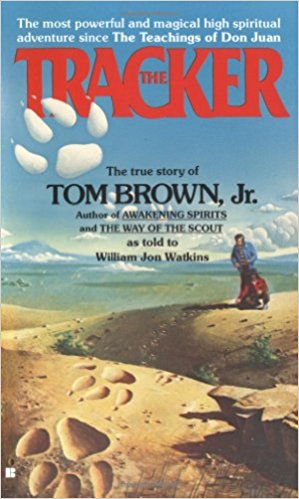
If you’d like to learn more about Tracking
If you’d like to learn more about tracking techniques, as was seen by Cory’s FWS job, here is an excellent book.
Tom Brown, Jr. met an Apache named Stalking Wolf at a young age, who taught him how to track nearly everything in the wilderness. His keen sense of observation is told to William Jon Watkins, who was recording the book’s contents, so while reading it, the point of view changes from Third person to Second person. As of this Hub publishing, one of the trends in the publishing world, is the use of First person POV being used in the Romance and Chick Lit genre. However, William does a great job of switching between both POVs that makes it an enjoyable read.
Originally published in 1978, the chapters are broken down by creature type. Birds, mice, dog, predator, bear, it doesn’t matter, because Tom Brown, Jr. has tracked them all. Once I got started reading Chapter 1, “The Ultimate Track,” I couldn’t put the book down!
Sistah, who recommended this book to you?
I actually read an interview in the March 2017 issue of GQ, where Tom Hiddleston was being interviewed about his role in Kong: Skull Island, and was quoted as having read this book, in preparation for his role as James Conrad. Some of the Movie Viewers identified and remembered him as “Oh yeah, the Tracker Guy!”
When I had received my special order at the local Barnes & Noble, one of the booksellers couldn’t tell me whether it was fiction or non-fiction, as it wasn’t designated inside the Front cover. Since then, it’s been kept on my Reader Shelf, until the writing of this hub, as there wasn’t a reason for me to make reference to it.
If there are other authors, screenwriters or a certain AD whom I know likes to read a lot, this is a real life account, using real examples. Genuine.
Market delivery schedule
Not having met any of the filmmakers, I would like to extend my biggest “Thank you” to The Weinstein Company for distributing this film. Market timing was excellent, as this film was released after the Detroit theatrical release (Detroit had a Thursday premiere night on August 3rd, with a Friday opening on August 4th nationwide, both chains on Oahu). I’m glad for this timing decision, as it allowed Movie Viewers a few days to a week or so, in between films. To form an opinion, if nothing else.
- It also gave Movie Viewers a chance to watch other non-fiction related films, such as An Inconvenient Sequel: Truth to Power.
- This demonstrates an understanding of the Film market’s delivery schedule, for Movie Viewers to not only enjoy each filmmakers’ work, but to give audiences a film break in between intensely related subject matter. And, in my case, to perform the film analysis for Movie Viewers, who might not enjoy or be aware of multi-genre film topics.
- Interestingly enough, I have a lot of PostFilmDs with different people, and the audiences who didn’t like Detroit, absolutely loved Wind River; this would be the same audience demographic who liked Hell or High Water. Wind River was distributed through the Consolidated Theatres chain on Oahu, while the Regal Theatre Group did not show it (Freeman, Weekly Movie Schedules, 081817 through 090717).
This was a little different distribution strategy, than what was used for Hell or High Water, which was shown at both Oahu theatre chains; respectively, Ward 16, Kahala 8 and Dole Cannery 18. HoHW’s theatrical distribution company was x. On the day I decided to see Hell or High Water at Ward Cinemas 16, it was taken off the Show schedule, which was the same Labor Day weekend, one year ago. I was then able to see it post-Labor Day 2016, at Dole Cannery 18, before it came off its Marquee.
Perhaps Wind River’s content might have been more than some audiences could handle, had they not been forewarned about the film story. It’s not everyone’s cup of tea. Taboo and Controversial are two words that immediately come to mind. With this Hubpage, hopefully I’ve done my best to inform and educate you about this multi-cultural topic.
Much more than Cowboys and Indians
I had seen the latest issue featuring Clint Eastwood, another one of my favorite actor-directors, in the local Barnes and Noble. I missed purchasing the issue, because my bookseller friends were so efficient at merchandising the next issue onto the magazine shelves. So, I’ll have to investigate some other sources to obtain a copy of last month’s issue, as I would like to see C&I’s coverage of Clint’s Western movie career. Having seen Clint appear in two western magazines in the month of August 2017, makes me wonder what the reason is. I will find out and let my readership know in a future column.
True Fact: Clint Eastwood acted in numerous military films before he starred in the Western genre. He then starred in various film titles in the Police genre, transferring the “Gunslinger” concept between genres.
|
|---|
Other filmatic notations
- Good sound editing with the ammunition used by Cory.
- The film story’s ending, which is of a similar vein to Baby Driver, The Devotion of Suspect X, Hell or High Water and Triple 9. There are some of 2016 & 2017’s film recommendations, within this type of story telling.
- Story, plot and characters were put together really well. It’s been a while since I’ve felt that “Umph” feeling with a film. And here’s why…
In one of my writing classes, my online professor Eva says:
“Novelists use four main devices or tools in their writing:
•Believable characters (shown through action and dialogue)
•Interesting and convincing dialogue
•Plot (the problem that will eventually be resolved within the book)
•Scenes of movement (showing how the characters act rather than telling)”
Lastly, I’m going to explain how the ethnic terms are used, because that’s the way life is in this part of the country.
- Native Americans are commonly referred to as “Natives,” while the Caucasian people are referred to as “White.” Sometimes, I used to hear the joke “Let’s play cowboys and indians,” (surprisingly, said by a younger Native American women), but depending on the person’s sense of humor, the recipient might be offended by that phrase. As Miss Manners says…
- Personally, I never had a problem living or visiting in the West, as I like to call people by their first name. And, if you met me, I’m pretty nice. When Cory refers to that “spirit,” that’s what I’m made of, at least, according to my father (“I think, you’re tougher than your brother”).
- In order of film screen appearance: Kelsey Asbille (Natalie, the Native American victim), Jeremy Renner (Cory Lambert, the Caucasian Hunter-Tracker), Julia Jones (Wilma, Cory’s Native American wife), Teo Briones (Casey, Cory and Wilma’s son), Apesanahkwat (Dan Crowheart, one of Cory’s friends whom he helps out with his FWS skillset), Graham Greene (Ben, the Indian Tribal Police Officer), Elizabeth Olsen (Jane Banner, FBI Agent), Tantoo Cardinal (Alice Crowheart, one of Cory’s friends who outfits Jane, when she first arrives), Eric Lange (Dr. Whitehurst), Gil Birmingham (Martin, Natalie’s father), Althea Sam (Annie, Natalie’s mother), Tokala Clifford (Sam Littlefeather, Chip’s friend), Martin Sensmeier (Chip, Natalie’s brother), Tyler Laracca (Frank), Shayne Cullen, Dallin Tusieseina, Austin Grant (Carl), Ian Bohen (Evan), Hugh Dillon (Curtis), Matthew Del Negro (Dillon), James Jordan (Pete), Jon Bernthal (Matt, Natalie’s boyfriend), Blake Robbins (Tim), Norman Lehnert (Dale), and Ian Roylance (Coroner). All these actors and actresses deserve a round of applause (sorry if I missed anyone’s names, the credits roll by quickly!), as I couldn’t imagine being in their shoes for some of the material they were presented to transform from script to screen.
Wind River is much more than Cowboys and Indians, as I’ve written about. So, don’t believe the hype, go see the film, form your own opinion, as this might facilitate a great PostFilmD with those audience members who might not have met, nor engaged with one another. Until next time, and the next film review, Aloha, Pam
© 2018 Pam Freeman

